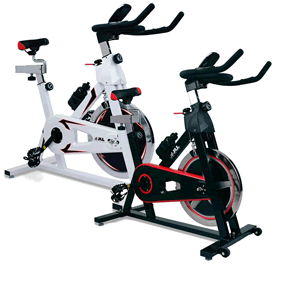 It is time we embraced the fact that sitting still is not the best way for kids to learn. Active learning environments help kids to maintain better physical and mental health and may well be the key to greater academic success.
It is time we embraced the fact that sitting still is not the best way for kids to learn. Active learning environments help kids to maintain better physical and mental health and may well be the key to greater academic success.
I vividly remember throwing a ball as hard as I could in a game of ‘rounders’ (England’s junior version of baseball) only to see it fly over my head and land on the ground behind me. As an adult, I have witnessed mortified kids tripping over every single hurdle on Sports day, watched by wincing parents. On the lacrosse field, I have sympathized with students who prefer to run from a flying ball, rather than step into it’s bullet like trajectory. And then there are all the painful recounts of those students who have to endure being the last to be chosen for a team (unless one of their closest friends is doing the choosing).
Sport is the favourite lesson for many young athletes, but the worst nightmare for many others. So vivid are many people’s embarrassing memories of school sport, that as adults, they will not participate in any sporting activity. School aims to encourage a love of life long improvement but all too often it puts kids off participating in ongoing activities more than it inspires them.
There is enormous concern about the rising incidence of obesity and poor health in young Australians. Poor physical health has long been significantly associated with poor mental health in people of all ages. More recently, significant relationships have been identified between physical health and academic performance. Kids who are active, eat well and have adequate sleep feel better and perform better, at school and beyond. These findings emphasize the need for schools to encourage higher levels of activity among their students. Yet, this does not necessarily equate with another sporting opportunity or swimming carnival.
It is time that the need for greater physical activity is firmly separated from the pursuit of sporting prowess. This is not so say that there is anything wrong with competitive sport, just that it is not for everyone, and if insisted upon can lead to more harm than good. I suggest that as much as schools place sport on the timetable, they need to embrace activity within the timetable. And, there are many ways that this can be done with the benefit of improving classroom engagement, cohesion and learning outcomes.
I recently read about the success of a North Carolina elementary (primary) school that has swapped its’ desks for exercise bikes. Over the past five years, it has participated in a ‘read and ride’ program that has the children peddling as they read. The program has been carefully assessed and has been found to have improved the fitness, weight and overall health of the school’s students. More surprisingly, it has also been found to have significantly improved the reading proficiency of the students. Scott Erti, the educator who started the program at Ward Elementary School suggests that the significant finding may be due to the fact that “Riding exercise bikes makes reading fun for many kids who get frustrated when they read. They have a way to release that frustration they feel while they ride.” Ward School’s bikes were donated by the community. Other schools jumping on board with the program have bought one or two bikes for ‘fidgety’ kids or managed to raise funds to equip whole classes.
In a slightly less ambitious but equally positive way, several high schools in the UK and in the US have started teaching students at ‘standing desks’ and found that they are alert for longer and demonstrate better attention spans in the classroom. While I would hesitate to define ‘standing up’ as physical activity, the benefits of even small improvements to continually sitting down are evident.
The US department of Health and Human Services recommends that children of all ages participate in at least 60 minutes of exercise each day. However a survey of 2013 high school students found that only 27.1% achieved this goal. Schools need to find more inventive ways to keep students active during class time, in non-threatening and supportive ways.
The following is a list of suggestions for teachers, to help them embrace a more active learning environment across the curriculum:
- Start the day with a whole school activity that embraces children of all ability and all sizes. For example, a twenty-minute walk around the oval or a simple exercise routine to music. Greater time spent in physical activity has been found to aid academic learning rather than detract from it.
- Provide opportunities for physical activity sessions that are not centered in competitive sport, as well as those that are. For example dance, yoga or playground games can all benefit physical fitness and be enjoyable for less sporty kids to be involved in.
- Give kids the opportunity to play sport in both competitive and non-competitive ways, depending on their ability and interest. For example, some kids will thrive with a competitive game of football, others may prefer to simply run around with the ball.
- Help less physically confident kids to feel comfortable placing more focus on their body. For example, allow comfortable clothing to be worn for sport, or bathers to be put on at home before school swimming lessons.
- Incorporate bursts of activity in class time. For example, a five minute activity that involves standing up and down in response to key words in a poem can be a good brain break in an English literature class.
- Incorporate movement into learning. For example, running around to measure the length and breadth of outside objects in a primary math class.
- Make sure that kids do not feel pressure to compete in sport or to perform beyond their abilities. It is easy to assume that others love doing something you are passionate about as much as you do. As every teacher knows, this is not always the case. Just as we need to acknowledge that algebra is not for everyone, so too do we need to appreciate that sports day is not the best day of term for all. If kids are unhappy about being involved offer them opportunities for a less pressured experience. A wheelbarrow race or a three-legged fun run may be more appealing than a relay.
- Involve the whole school community – so exercise is viewed as a necessary element in everyone’s life – and not just something the sports teacher does. If you ask your year eight kids to walk around the oval, walk around with them.
In addition to the opportunities that can be embraced in the structured timetable, there are also many ways that schools can encourage greater physical activity before and after school, and in break times.
Walking and cycling to school needs to be encouraged with increased awareness of the benefits of this means of travel, and increased awareness of safety. Schools need to make sure they provide space for bikes and scooters to be safely parked during the day. Make sure that the school uniform restrictions allow for suitable clothes to be worn to bike to school. In addition, better access with bike lanes and pavements provides a worthy cause for school campaigning.
Once at school, a greater emphasis on physical exercise can be encouraged by providing adequate time for recess breaks. Another, idea that has been found to be effective in some schools is to encourage time for play and activity before lunch is eaten (rather than after). This ensures that kids are not exercising on a full stomach and have the opportunity to eat once they have finished running around.
Certainly boosting involvement in physical activity alone will not solve the childhood obesity epidemic. However, it is a critical part of the solution. Our schools are focused primarily on academic pursuits, and this is very much in line with our overarching educational aims. However, academic success does not arrive in isolation from other aspects of learning. As such, Australia leads the world in it’s recognition of social and emotional learning as a vital part of the educational process. We are exemplary with the realization that social and emotional competency provides a vital foundation for effective education, and a vital ingredient for successful living. It is now time that we woke up to the fact that physical health is also a vital focus for schools to embrace.
Kids have bodies as well as minds and as such, they are made to move. Active students have better health and physical fitness. Current research suggests that they also have better concentration and attention; better attendance and academic performance and are happier and less anxious than their less active peers.
It is vital that as much as we may applaud the achievements of our sporting students, we embrace an active lifestyle for all students. This means providing realistic and non-threatening opportunities to move and learn.
——————————————————————————————————–
Dr Helen Street has an extensive background in social Psychology with a passion for education. She presents her work in books, articles and in seminars and workshops for schools. Helen is also passionately involved in the ongoing development of The Positive Schools conferences, www.positiveschools.com.au,
*This article first appeared in Teachers Matter magazine earlier this year


